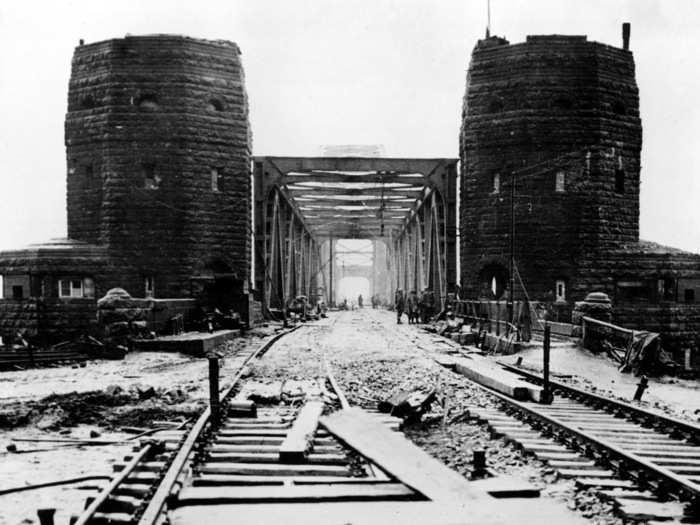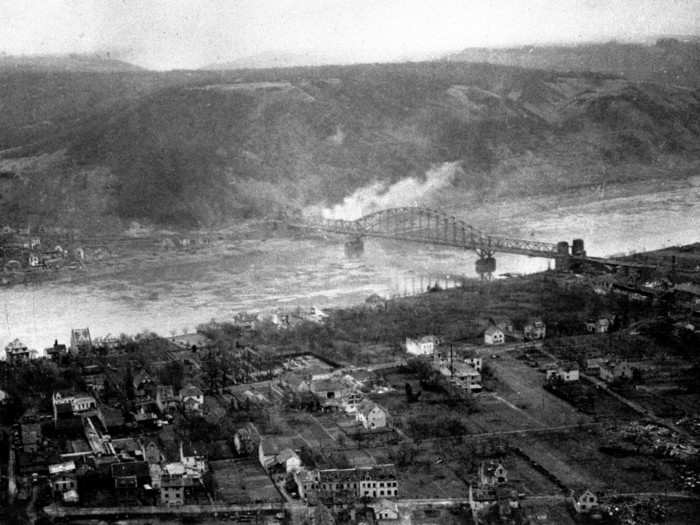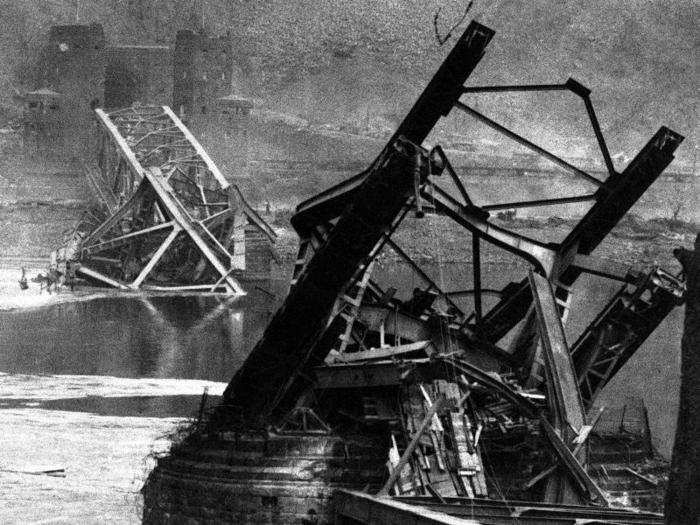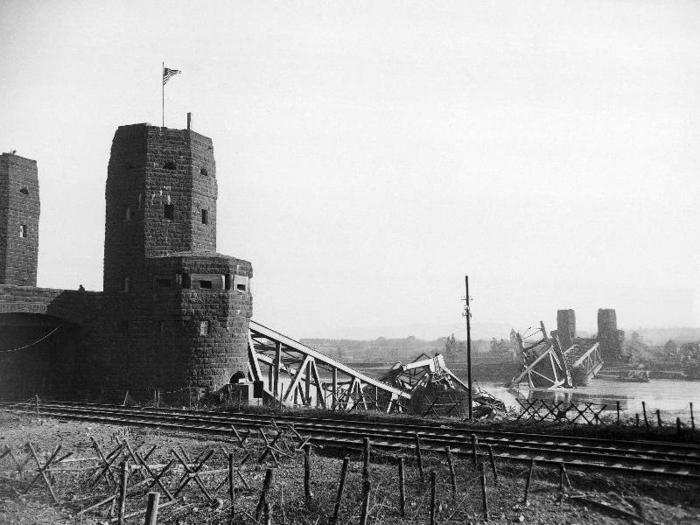- Home
- Military & Defense
- 72 years since the Battle for Remagen - 8 photos of the Allies' 1st toehold in the Nazi heartland
72 years since the Battle for Remagen - 8 photos of the Allies' 1st toehold in the Nazi heartland
As US troops approached the Rhine River in February and March 1945, the prospects of finding one of the 40 bridges across the river intact seemed dim — until Lt. Karl Timmerman and the men of his company came across the bridge at Remagen.

Timmerman and his troops advanced through the town of Remagen on the western side of the river, fighting off German defenders. German soldiers on the bridge prepared the numerous demolition charges they had planted to destroy the bridge.

Just as Timmerman ordered his men to cross the span, its German defenders set off the explosives. Explosions rocked the superstructure, sending up plumes of smoke and debris. The US troops flung themselves to the ground for cover but soon stood up to see the bridge intact.
"I asked for 600 kilos (1,320 pounds) of army explosives; I received 300 kilos (660 pounds) of commercial explosives," Willi Bratge, a German captain in charge of bridge security at the time, told Stars and Stripes in 1962. "They were to be exploded electrically; we activated the detonator; only one charge went off causing a crater in front of the bridge.
"The main charge did not go off; a tank round must have hit the pipe carrying the cable to the explosives," he added.
Jacob Kleebach, then a sergeant of the bridge security force who became a carpenter in Remagen after the war, differed: "All those stories are not true. Nobody knows. It just didn't explode."
American troops scrambled across what remained of the Ludendorff Bridge, backed up by rifle, machine-gun, and tank fire suppressing the German soldiers attempting to beat them back. As they sprinted across the railroad tracks toward the eastern bank, US troops cut every wire they spotted, hoping to avert further demolition.

Sgt. Alex Drabik, running for his life through a storm of German fire, was the first infantryman to set foot west of the Rhine. Soon behind him was Timmerman.
Back in the US, on the evening of March 7, Mary Timmerman, at work at the Goldenrod Cafe, got a long-distance call. She was apprehensive. She had two sons in the US Army in Germany and brothers fighting on the German side.
"This is the Omaha World-Herald calling," the voice boomed, according to Ken Hechler's 1957 book, "The Bridge at Remagen." "Your son Karl has just crossed the Remagen bridge. You know what that means?"
"I know what it means to me: Is he hurt?" she replied.
"No, he's not hurt. But listen to this: Karl Timmermann was the first officer of an invading army to cross the Rhine River since Napoleon," the voice told her.
"Napoleon I don't care about," she said. "How is my Karl?"
American troops fanned out on the east side of the bridge, securing the surrounding area. Some members of the bridge's German garrison, confronted in the railroad tunnel at the eastern end, surrendered.

The call came into III Corps headquarters less than an hour after US troops had crossed the bridge.
"Hot damn!" a sergeant cried as he transferred the call, according to Charles B. MacDonald's 1972 book, "The Last Offensive." "We got a bridge across the Rhine and we're crossing over."
"Hot dog, Courtney," Gen. Omar Bradley, commander of the 12th Army Group, remembered telling Gen. Courtney Hodges, who was commander of the First Army at the time.
"This will bust them wide open ... Shove everything you can across it," Bradley said. Gen. Dwight Eisenhower, commander of Allied forces in Europe, responded in a similar way.
The Allied capture of the bridge at Remagen was a coup, but it would be short-lived. The Germans would turn their arsenal on it in attempts to bring it down. Mines, mortars, artillery, rockets, and Luftwaffe aircraft were sent at the bridge, but it remained intact until March 17, when it collapsed.

Many men were on the bridge when it collapsed. One reason for the collapse was that the eastern end of the bridge had been damaged by German attempts to blow it up before Allied troops captured it.
Germans and Americans who were there said overuse ultimately brought it down. Trains and retreating German vehicles during the days prior to the bridge's capture, plus heavy American tanks crossing after it was captured, strained the weakened span.

"No German bombs hit the bridge," Willi Bratge, in charge of security at the bridge at the time, told Stars and Stripes. "The nearest German V2 hit 200 yards from it."
US Air Force Sgt. Ray B. Smith, then an Army anti-aircraft gunner at the bridge, told Stars and Stripes, "They (the Luftwaffe) never bombed it. There was too much ack-ack. No German artillery fire hit it. It collapsed because it was remodeled. The engineers put heavy planking over the rails and removed some of the supports."
"It was a case of a rail bridge being converted to a vehicle bridge, and it just couldn't stand the conversion," he said.
By the time it fell, US Army engineers had built heavy steel bridges nearby. In the 24 hours after it was captured, nearly 8,000 men, a tank battalion, and other units crossed the river. In less than three weeks after the bridge was taken, Allied forces sent more than 25,000 troops into the Ruhr Valley, the German industrial heartland.

Source: Deutsche Welle, "The Last Offensive"
Both German and American military officials agreed that capturing the Ludendorff Bridge ultimately shortened the war. Germany surrendered exactly two months after the bridge was captured, on May 7. After the war, the bridge was not rebuilt.

Source: Deutsche Welle
Popular Right Now
Advertisement